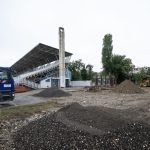October 2, 2018 – Getting tourists to visit a destination is one thing, getting them to spend is quite another. How is Croatia doing?
With more than a fifth of the economy resting on tourism, Croatia is heavily dependent on foreign visitors spending their hard-earned cash in the country, and Croatia has enjoyed considerable success in recent years in expanding its tourism after the devastating disruption of war in the 1990s.
For a small country of just 4 million people, Croatia’s tourism numbers are very impressive, with some 17 million arrivals in 2017, but how much are people actually spending?
A snapshot from the How Much website shows that Croatia’s tourism income is significant, and according to the data presented, Croatia found itself 13th in the European tourism income table in 2017, with some US$11 billion in tourism revenues. How Much extracted the data from the recently-published UNWTO annual report, which you can read here.
The king of global tourism is the United States, with a whopping US$221 billion income a year, but Europe fares very well after that. Here are the top countries in Europe by revenue:
Spain $68 billion
France $61 billion
UK $51 billion
Italy $44 billion
Germany $40 billion
Austria $20 billion
Greece $17 billion
Portugal $17 billion
Switzerland $17 billion
Netherlands $16 billion
Sweden $14 billion
Poland $13 billion
Croatia $11 billion
It should be noted that 2017 was a challenging year for some of Croatia’s tourism competitors, including Turkey ($22 billion), Greece ($17 billion) and Egypt ($8 billion), and all three can be expected to bounce back with their 2018 revenues. Croatia, too, had a strong year, with this year’s revenues expected to be in the region of $13 billion.
While Croatia’s tourism efforts have understandably initially been centred on its idyllic coastline and islands, tentative efforts are now being made to expand the tourism focus to other parts of the country and away from a dependence on sun and sea tourism. There are several lucrative sectors which have high revenue potential, including gourmet tourism, wellness (40% of neighbouring Slovenia’s overnight stays relate to wellness tourism) and Croatia’s rapidly emerging medical tourism sector.










